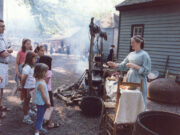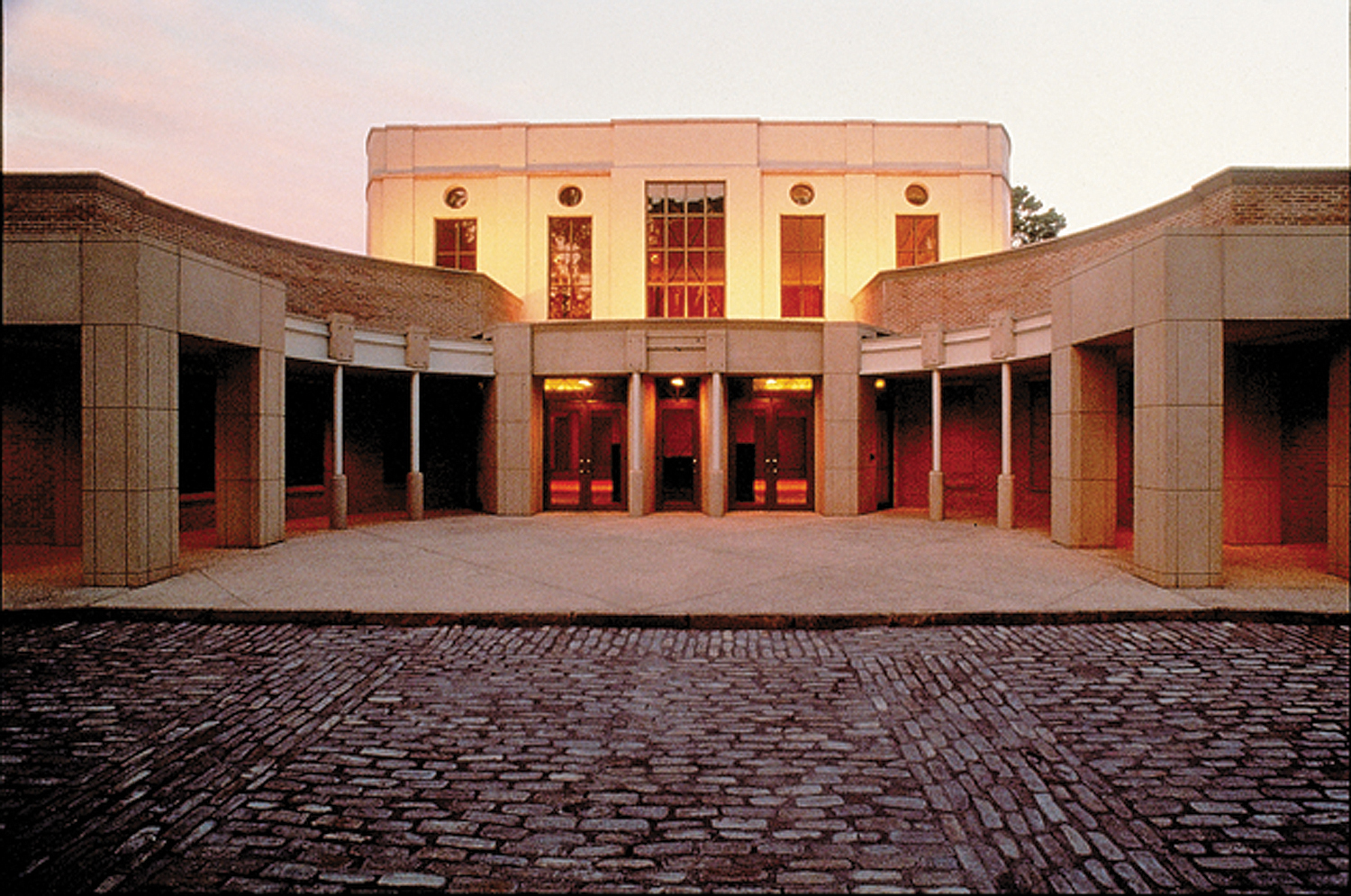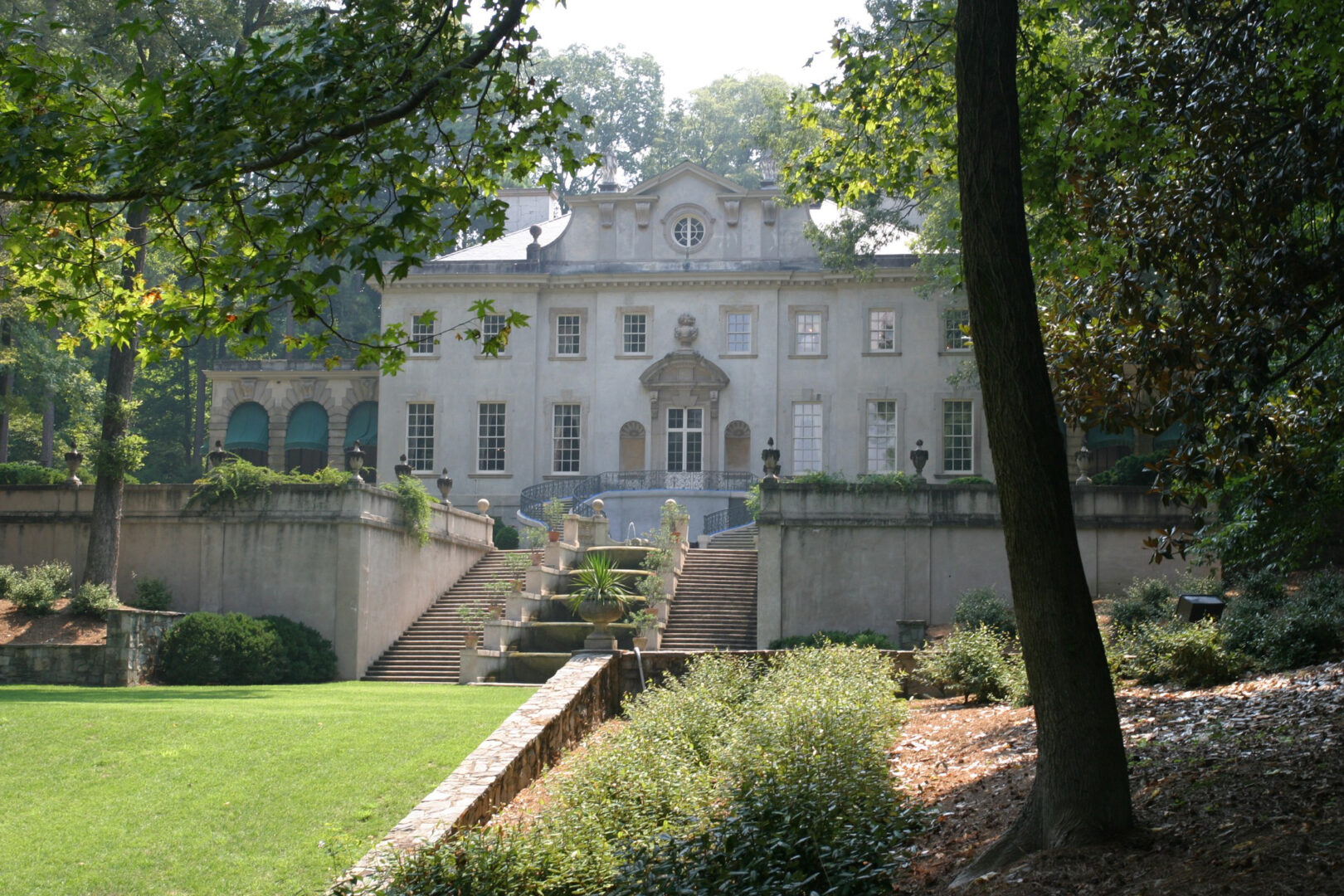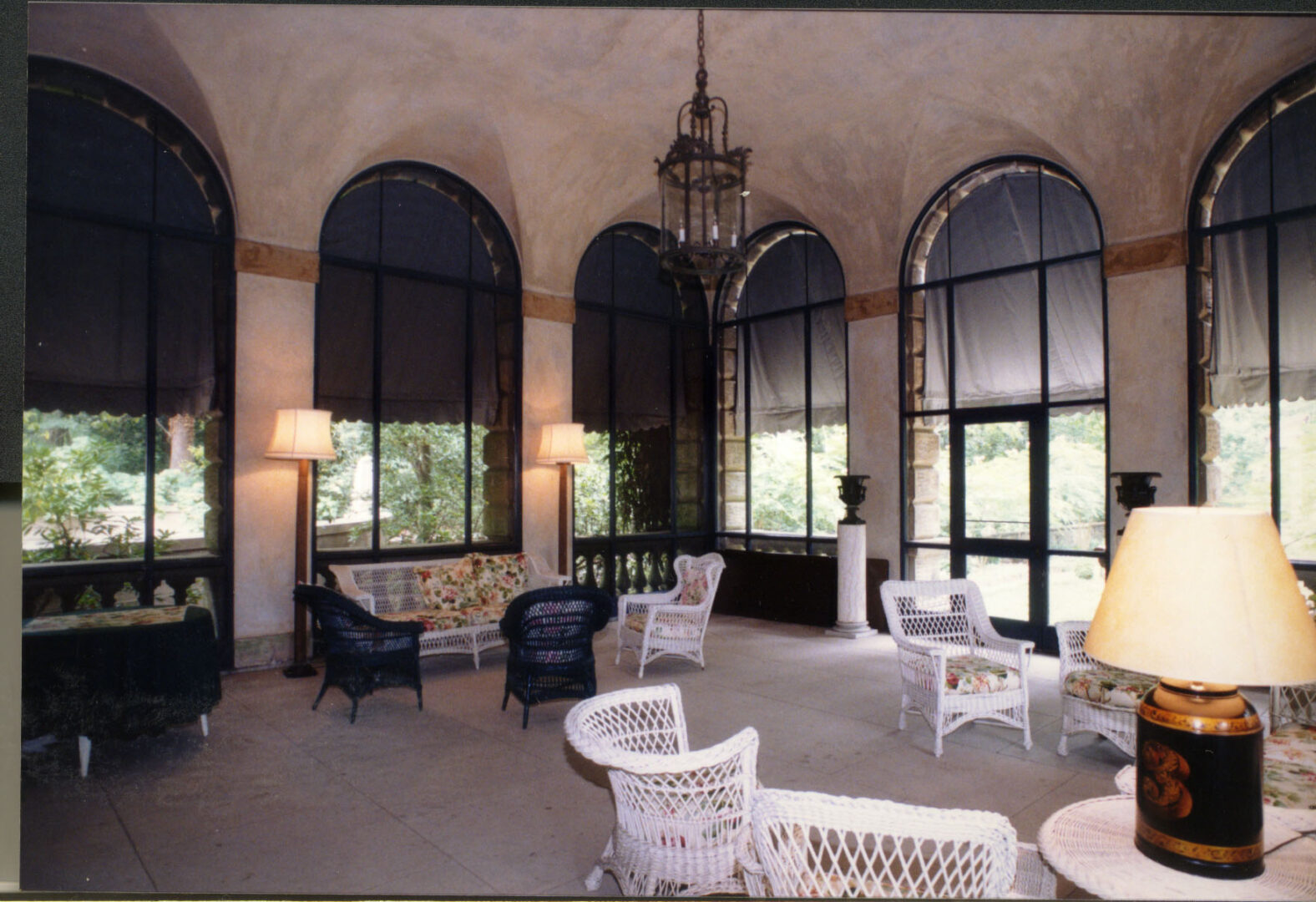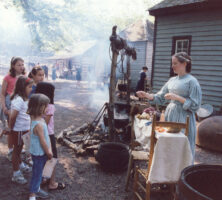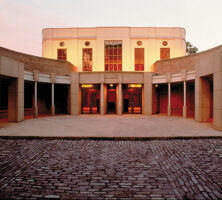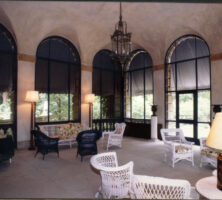The Atlanta History Center is a diverse campus for historical education and research. Situated on thirty-three acres in the Buckhead neighborhood of Atlanta, the center features one of the largest history museums in the Southeast, a research library and archives, two historic house museums, five gardens, the Cyclorama, and a nature trail. Additionally, the center operates the Margaret Mitchell House and Museum in Atlanta. The center offers numerous programs, lectures, and workshops for all ages throughout the year. It received a Governor’s Award in the Humanities in 1994.
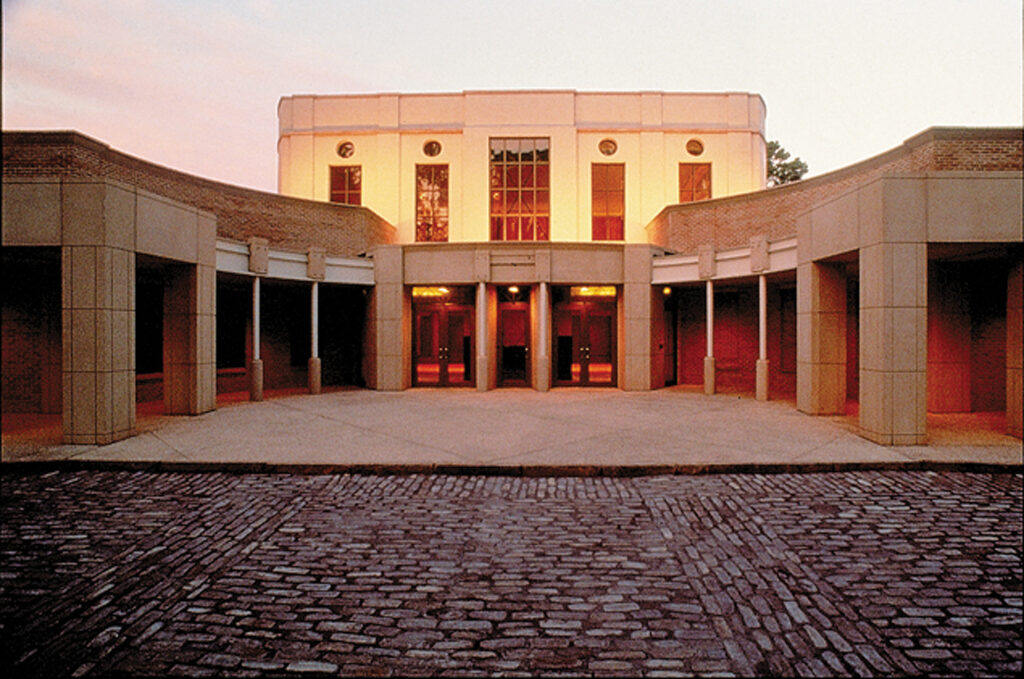
Courtesy of Atlanta History Center.
The center was established as the Atlanta Historical Society in 1926 by fourteen of the city’s leading citizens, notably the attorney and state legislator Walter McElreath, who wished to “arouse in the citizens and friends of Atlanta an interest in history.” The early historical society acted primarily as a discussion group and collector of historical documents and artifacts. It also published the Atlanta Historical Bulletin. Through the Atlanta Historical Society’s first decade of existence, its board of directors and volunteers operated the organization in rented office space in the Biltmore Hotel and the Erlanger Theater. The first employee, an archivist, was not hired until 1936. In 1946 the organization purchased a house at 1753 Peachtree Street for its new offices.
After purchasing the house, the historical society struggled financially. In 1951, however, the organization received a large financial gift when McElreath died and left most of his $5 million estate to the Atlanta Historical Society. The donation officially passed to the organization in 1965 upon the death of McElreath’s wife. With the financial boon, the organization in 1966 purchased the Edward Inman property, known as the Swan House, on West Paces Ferry Road. From its new base in the Buckhead neighborhood, a few miles north of downtown Atlanta, and with larger financial resources, the society gradually expanded by building additional structures, purchasing the 1840s Tullie Smith Farm, hiring additional staff, and undertaking many new functions as a museum. The society also moved its previous headquarters, the historic Peachtree Road house, to its new site.

Courtesy of Atlanta History Center.
Over the years, the Atlanta Historical Society has grown with, and in much the same way as, Atlanta. With the move to Buckhead in 1966, the organization mirrored the northward move of many Atlanta businesses that were leaving downtown’s central business district. Throughout the 1970s and 1980s, the organization, like the city, became more socially inclusive by working to diversify its board of directors and by addressing the histories of African Americans, women, and the working class in its collections and exhibits.
Much of the growth and change at the historical society occurred between 1983 and 1991 under the leadership of executive director John Ott. During his tenure, the organization worked to expand its audience from one largely composed of Atlanta’s white elites to one that embraced a larger geographic area and was more ethnically diverse. Additionally, the historical society forged plans to build a new facility that would house a large museum. In 1985 the American Association of Museums awarded accreditation to the organization in recognition of its professional growth.
Along with the changes in content and audience, the Atlanta Historical Society changed its name to the Atlanta History Center in 1990. The new name served to illustrate that the institution was no longer an exclusive organization but rather a center that welcomed all visitors. In 1993 the center opened the Atlanta History Museum—a 30,000-square-foot facility featuring two galleries for traveling exhibits and four permanent exhibits drawn from the center’s collections: Gatheround: Stories of Atlanta; Turning Point: The American Civil War, 1861-1865; Shaping Traditions: Folklife in a Changing South; and Fair Play: The Bobby Jones Story, which chronicles the life and career of golfer Bobby Jones. Since 1993 the organization has renovated both the Swan House and the Kenan Research Center, which is a public archives and research library, including the Cherokee Garden Library, with extensive holdings on the history of Atlanta and the South.
In late 2005 the center acquired an important collection of Confederate artifacts, including the uniforms of common soldiers, various weapons, and the flag of the 1st Georgia Infantry. The items were purchased from George Wray, a private collector from Atlanta, to be displayed alongside the Atlanta History Center’s Turning Point exhibit. Gathered by Wray over fifty-six years, the collection contains almost 1,000 unique and valuable relics.
Other attractions on the grounds of the center include five gardens—the Quarry Garden, Tullie Smith Farm Gardens, Swan House Garden and Landscape, Cherry Sims Asian American Garden, and Frank A. Smith Rhododendron Garden—and the Swan Woods Trail. Restoration of the Tullie Smith Farm, comprising nine nineteenth-century buildings, was completed in October 2005.
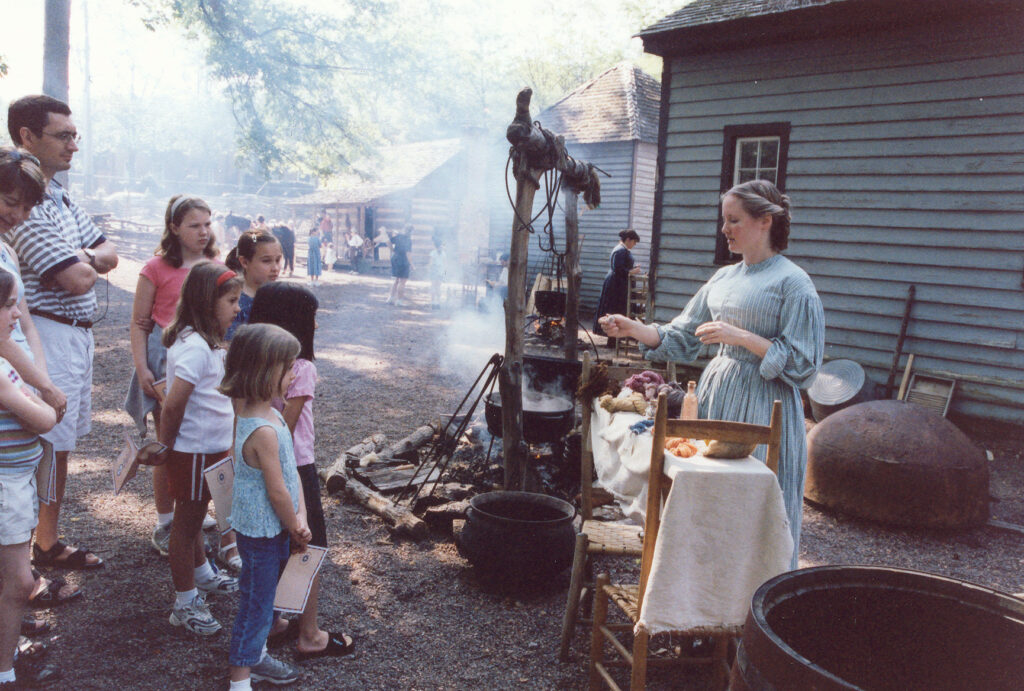
Courtesy of Atlanta History Center.
In July 2006 the Centennial Olympic Games Museum opened at the center, marking the ten-year anniversary of the 1996 Olympic Games in Atlanta. The museum, which offers a variety of displays and presentations covering Olympic history as well as the games in Atlanta, is housed in the center’s Fentener van Vlissingen Family Wing. The following year the center opened the temporary exhibition “I Have a Dream: The Morehouse College Martin Luther King Jr. Collection.” The papers in this collection were acquired in 2006 through the contributions of numerous donors in Atlanta and deeded to Morehouse College.
In 2014 the city announced it was entering a seventy-five-year lease agreement with the center to rehome the Cyclorama—a massive, circular painting depicting the Battle of Atlanta and one of only two cycloramas remaining in the United States. The painting was transported from its longtime home in Grant Park to a newly constructed building on the center’s campus, where it underwent a $35 million restoration before reopening to the public in 2019. The restored Cyclorama includes recreations of several sections which had been excised from the original in 1921 and features a twelve-minute film presentation about changing historical interpretations of the painting.
In 2018 the Georgia Building Authority announced it would also relocate the zero milepost, which marked the southern terminus of the Western and Atlantic Railroad, to the Atlanta History Center campus in Buckhead. This move angered some preservationists, who argued the artifact should remain in its historic home in downtown Atlanta. The zero milepost, along with the restored Texas locomotive, of Andrews Raid fame, comprise a new exhibit on Atlanta’s origins as a railroad hub.


